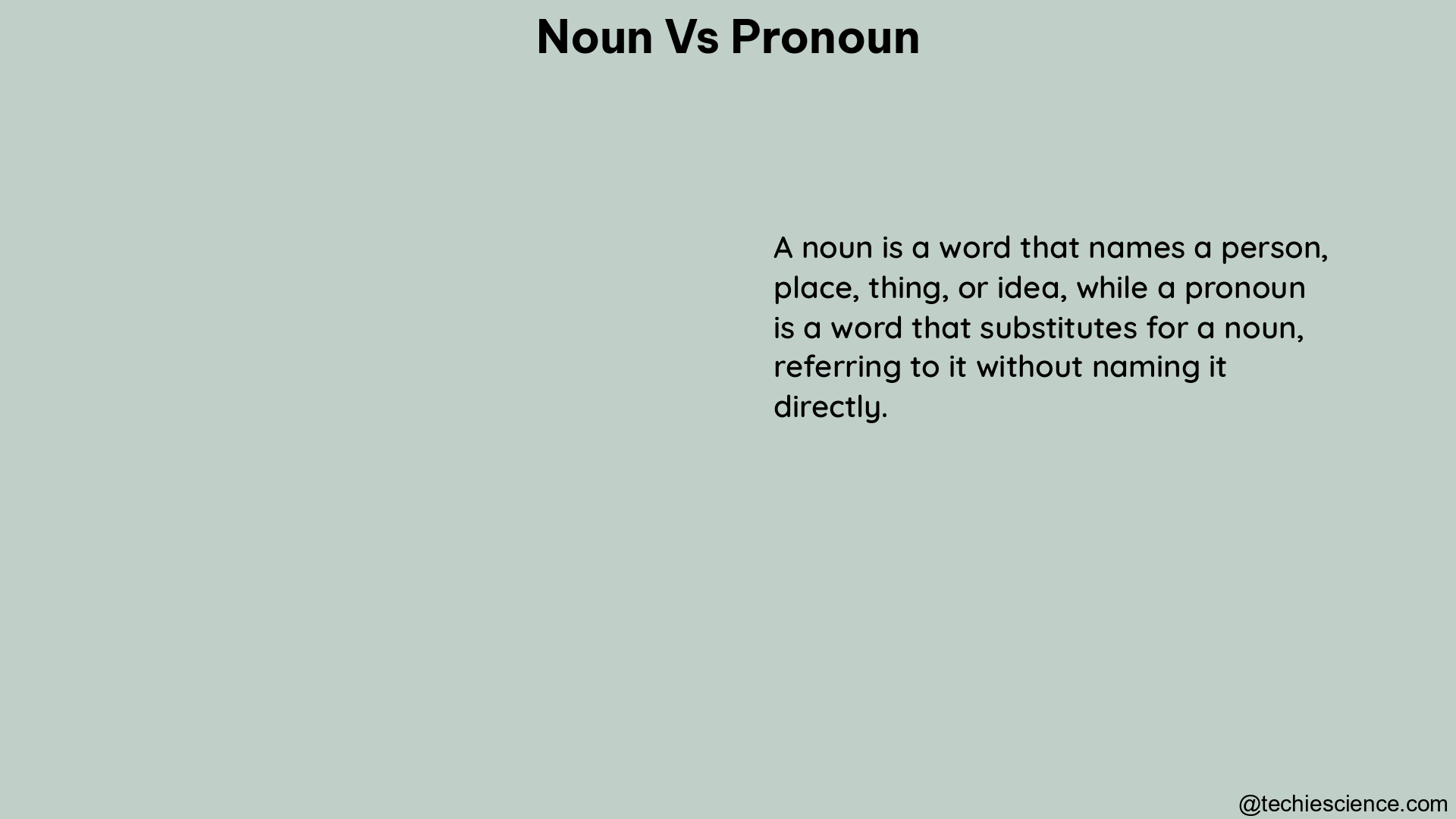Nouns and pronouns are the fundamental building blocks of the English language, serving distinct yet complementary roles in constructing sentences. Understanding the nuances between these two parts of speech is crucial for effective communication and mastering the English grammar. In this comprehensive guide, we will delve into the intricacies of nouns and pronouns, exploring their definitions, classifications, and key differences.
Defining Nouns
A noun is a word that names a person, place, thing, or idea. Nouns are the primary means of identifying and referring to the entities that make up our world. They can be further classified into several subcategories:
Proper Nouns
Proper nouns are specific names of people, places, or things, and are typically capitalized. Examples include “John,” “Paris,” and “Mount Everest.”
Common Nouns
Common nouns are generic names of people, places, or things, and are not capitalized unless they appear at the beginning of a sentence. Examples include “dog,” “table,” and “sky.”
Singular Nouns
Singular nouns refer to a single entity, such as “dog” or “house.”
Plural Nouns
Plural nouns refer to more than one entity, such as “dogs” or “houses.”
Possessive Nouns
Possessive nouns indicate ownership, as in “John’s book” or “the dog’s toy.”
Defining Pronouns

A pronoun is a word that replaces a noun in a sentence to avoid repetition. Pronouns can stand in for nouns, making the language more concise and flowing. Pronouns can be classified into several categories:
Personal Pronouns
Personal pronouns refer to individuals, such as “I,” “you,” “he,” “she,” “it,” “we,” and “they.”
Reflexive Pronouns
Reflexive pronouns refer back to the subject of a sentence, such as “myself,” “yourself,” and “himself.”
Demonstrative Pronouns
Demonstrative pronouns point out specific nouns, such as “this,” “that,” “these,” and “those.”
Indefinite Pronouns
Indefinite pronouns refer to unspecified entities, such as “someone,” “anyone,” and “nobody.”
Key Differences between Nouns and Pronouns
- Function: Nouns name entities, while pronouns replace nouns to avoid repetition.
- Usage: Nouns are used to introduce entities, while pronouns are used to refer back to previously mentioned entities.
- Form: Nouns typically remain the same in different grammatical contexts, while pronouns change form depending on the context (e.g., “I” becomes “me” in certain situations).
Examples
- Noun: “John is going to the store.” (John is a noun, referring to a specific person.)
- Pronoun: “He is going to the store.” (He is a pronoun, replacing the noun John.)
Practical Applications
Understanding the distinction between nouns and pronouns is essential for effective communication in English. By recognizing the roles and characteristics of each, you can construct sentences that are clear, concise, and grammatically correct. This knowledge is particularly important in academic writing, formal communication, and language learning.
Practice Questions
-
Identify the noun in the sentence: “The dog is barking.”
Answer: The noun is “dog.” -
Identify the pronoun in the sentence: “It is barking.”
Answer: The pronoun is “it.” -
What kind of pronoun is “that” in the sentence: “That dog is barking.”
Answer: “That” is a demonstrative pronoun.
References
- GeeksforGeeks. (2024). Difference Between Noun and Pronoun. Retrieved from https://www.geeksforgeeks.org/noun-and-pronoun/
- Oxford International English. (n.d.). Everyday Examples of Nouns and Pronouns. Retrieved from https://www.oxfordinternationalenglish.com/examples-of-nouns-and-pronouns/
- Britannica Dictionary. (n.d.). Nouns and Pronouns. Retrieved from https://www.britannica.com/dictionary/eb/qa/nouns-and-pronouns

The lambdageeks.com Core SME Team is a group of experienced subject matter experts from diverse scientific and technical fields including Physics, Chemistry, Technology,Electronics & Electrical Engineering, Automotive, Mechanical Engineering. Our team collaborates to create high-quality, well-researched articles on a wide range of science and technology topics for the lambdageeks.com website.
All Our Senior SME are having more than 7 Years of experience in the respective fields . They are either Working Industry Professionals or assocaited With different Universities. Refer Our Authors Page to get to know About our Core SMEs.